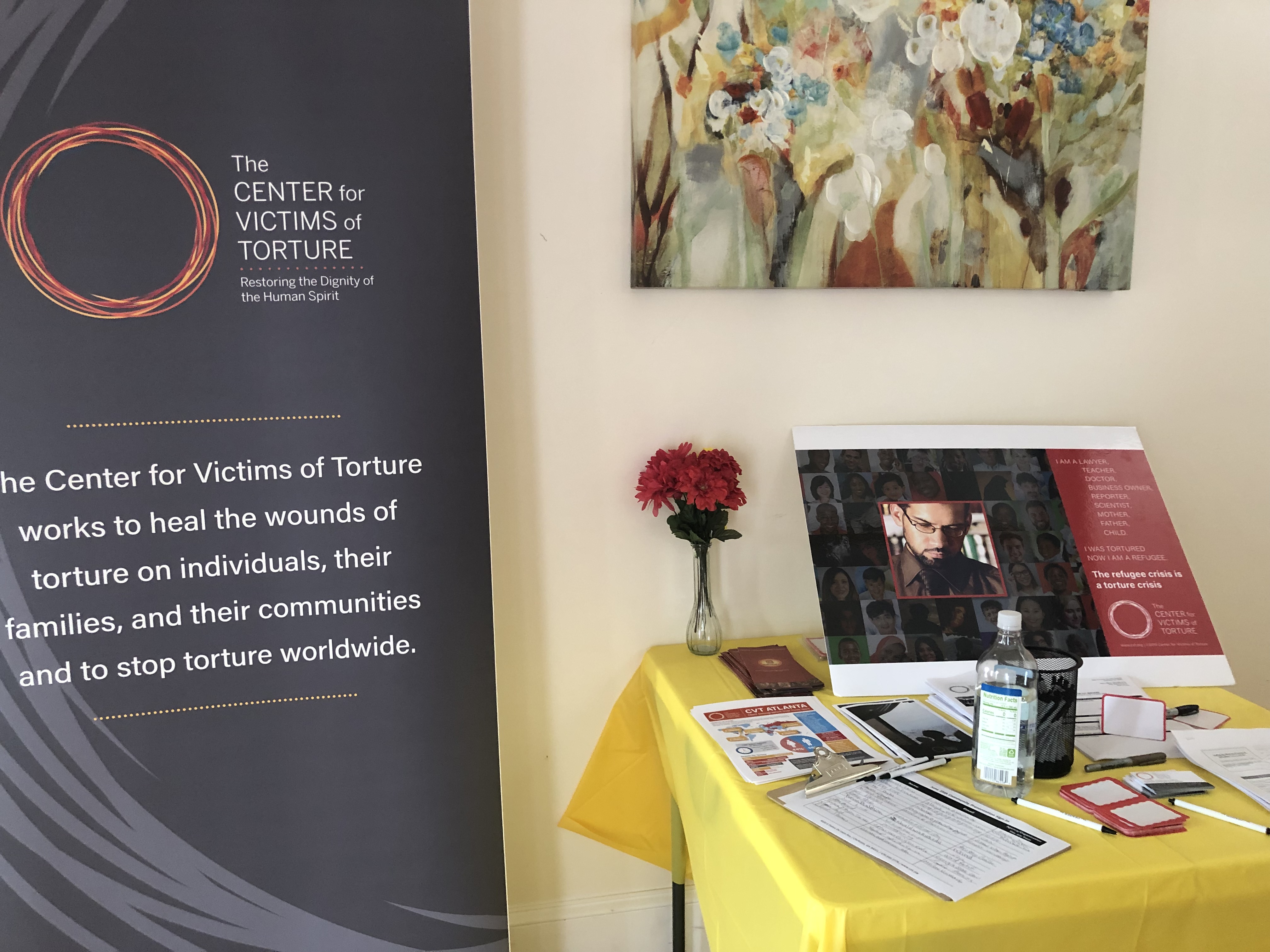Week Six: Where am I?
I thought maybe I was back in Queens.
The storefront signs were in different languages. The smells from inside the stores quickly transported me across the world. The people bustling around wore traditional garb. I could easily locate a mosque, a church and a temple within walking distance. Yet, I wasn’t back in the diverse borough I grew up in.
Drive east of Atlanta and you’ll find Clarkston — a small town with the remarkable distinction of being the most diverse square mile in America. For the past 40 years, more than 60,000 refugees have made this Georgia town their first home upon arriving in the United States. Forty nationalities and 60 languages are said to make up the 1.4 square mile town.
It’s fitting that I found myself in this safe haven during World Refugee Month. Nestled in this vibrant community is the Center for Victims of Torture (CVT). If you’re not looking for it, you won’t find it as you pass by. There’s no sign to notify you of its existence. It’s intentionally designed to look just like any other home — welcoming and peaceful. Yet, unlike any other home in Georgia, this house carries memories of unimaginable trauma.

The Center, which started in 1985 in Minnesota, offers trauma-specific psychotherapy to victims of torture. While more than half of the clients are refugees, their services are not specific to refugees. Nor is their aid tied to the stereotypical notions of torture (waterboarding or other ways to illicit secret information). At the Center’s World Refugee Day celebration, I learned torture is much more expansive and consists of any behavior meant to destroy a community and create a climate of fear. According to the Center, 44% of refugees are torture survivors. Three years ago, CVT opened in Georgia after a search for a second U.S. location to open. They discovered that since 1990, almost 40,000 refugees resettled in Georgia and the need for mental health services was drastically great here. Note, that number doesn't factor in asylum seekers.
At the end of the event, a dialogue began among the different community and organization leaders present. Amped by all they had learned, they were brainstorming ways to improve aid to these vulnerable communities. The room was buzzing with ideas: easier access to health insurance, transportation and jobs; an immigration system easier to comprehend; a kinder administration. I knew the dark reality of bringing any of these goals to fruition anytime soon was silently lurking in the room. Still, I was in a room with passionate and vocal people having necessary and important conversations. And, I was in a community that not only celebrated immigrants but one that likely wouldn't exist — or at least thrive — without immigrants.
As World Refugee Month comes to an end, I’m thankful for my visit to Clarkston. The services asylum seekers and refugees need differ and since GAIN specializes in aiding asylum seekers, I had little knowledge of the refugee experience. While the process once in the U.S. is vastly different among these two groups, one thing was clear as I left Clarkston: the trauma these people carry doesn't' stay behind when they enter the U.S. More and more this summer, I’m seeing the intermix of legal services and the need for victim services. GAIN partners with CVT and similar organizations to help clients beyond their legal status and I’m hopeful and excited to see how the legal environment will continue develop to meet these needs.